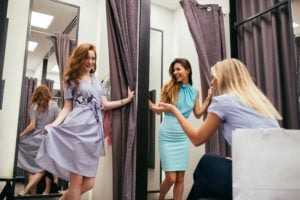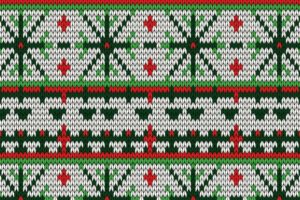Workplace standards are changing, and having a dedicated wardrobe of traditional blazers and pencil skirts is overkill when you’re only going into the office two days a week. How can you have pieces and outfits that work whether you’re in the office, Zooming at your kitchen table, or getting a morning of work done at your neighborhood coffee shop?
Creating a work wardrobe for a variety of environments is all about finding basic pieces that can work in any situation, and then dressing them up or down as needed. If you want to know how to create the perfect hybrid work wardrobe, read on.
But First: Types of Dress Codes and What They Mean
While many workplace dress codes are becoming more relaxed, it is still important to know what your place of work considers to be appropriate. Oftentimes, your workplace will specify what type of clothing is appropriate for the office using one of the following terms.
Business Formal
This type of attire is the highest level of professional dress attire. For women, this typically means a suit or skirt paired with conservative accessories and shoes. Along with this dress code, your employer will expect you to maintain a high standard of appearance when it comes to overall hygiene. This style is losing popularity in some workspaces with the rise of hybrid and remote work, but it still may be required in certain professions.
Business Professional
While business professional is a step down from formal, it is still very traditional and conservative. There is a bit of room for flexibility here with patterns and colors, but workers still tend to wear suits and skirts. In this style, you can add statement jewelry and chunky watches if you want—just don’t go overboard.
Business Casual
Business casual is a popular style in the modern workplace and is usually acceptable for video calls. In this style, you don’t need to wear a suit, pumps, and stockings every day, but you still need to maintain a certain level of professionalism with your outfits. You will not see jeans in this style very often unless your employer specifies that it is okay. Women usually wear nicer shirts like button-ups and blouses and comfortable dress pants or skirts. You are allowed more freedom with jewelry, hair, nails, and accessories.
Casual
This style might make it sound like you can wear whatever you want, but just because your employer says the dress code is casual doesn’t mean you can show up in shorts or a tank top. You still want to maintain professionalism when in the office. Make sure your clothes are neat, free of wrinkles, and appropriate for the type of work you do. For women, this style typically includes nicely fitted tops and comfortable dress pants or skirts. Jeans are sometimes acceptable in this style, but some employers still frown upon it. If you’re not sure, ask your employer if jeans are allowed in the office.
Work Wardrobe Basics Every Professional Should Have
Building a work wardrobe for hybrid work can be difficult because you will often wear different outfits at home than you would in the office. To make this process easier and in a way that won’t break the bank, consider having these essential pieces in your wardrobe. These pieces can easily be dressed up or down depending on the dress code and occasion, giving you more flexibility without needing hundreds of pieces in your wardrobe.
Pants and Trousers
When deciding how many pairs of pants you need, consider how many days you’ll be in the office—and remember, if you’re on a Zoom call, nobody can see below your waist! For those days you do need to maintain a certain standard, though, there are a few options to keep you both professional and comfortable based on your company’s dress code:
- Black dress pants
- Khakis or tan dress pants
- Black jeans
- Dark blue jeans
You may find other colors of dress pants to give your wardrobe more variety, but they’re definitely not required.
Tops
Having a variety of basic tops is great for allowing you to mix up your wardrobe to match the dress code and weather. Here are some suggestions to include in your work wardrobe:
- White button-down
- Patterned button-down or blouse
- Basic, solid-colored sweaters
- Basic long-sleeve shirts
- White collared shirts
- Basic t-shirts (white, gray, and black are staples)
Having different styles and colors of tops that work with different bottoms make it easy to switch up your look.
Jackets
Jackets are essential for colder offices and locations with colder climates. Here are a few work-appropriate options:
- Black blazer
- Brown blazer
- Tweed jacket
- Leather jacket (for more casual work environments)
- Suit coats, if applicable
If you live in an especially cold climate, consider investing a little more in a nice winter coat that matches some of the basics in your work wardrobe.
Shoes
Here’s a hard truth: You do not need a million pairs of shoes. A simple pair of everyday shoes will match almost any dress code. Think, leather oxfords or basic flats. If you like mixing it up, consider adding the following pairs to your wardrobe:
- Ankle boots
- Closed-toe heels
- Loafers
- Clean, white sneakers
The colors of your shoes should match multiple outfits you’ve made with tops and pants. This will allow you to easily mix things up whenever you feel like it. Ladies, if you don’t like heels, don’t wear them! Most workplaces do not expect women to wear uncomfortable heels all day. If your workplace requires heels or if you enjoy wearing them, be sure to invest in a comfortable pair and take them off as soon as you get home. Your feet will thank you.
Accessories
Adding accessories is a fun way to express yourself in the office. Make sure any accessories you choose are appropriate for your workplace. Here are a few popular choices:
- Black and brown belts
- A functional bag (Find one that can carry your laptop!)
- A watch
- Simple gold or silver rings and bracelets
What You Wear at the Office Versus at Home
What you wear in the office versus at home is going to look a little different. For the office, stick to the dress code your employer requires. If you’re working from home, your attire should depend on where exactly you are working and whether you have any video calls. If you have video calls, consider a comfortable pair of pants and a nice shirt, like a button-up. Pair it with some stud earrings or a simple necklace if you want to accessorize. If you don’t normally have video calls when you are working from home, consider yourself lucky: You can wear virtually anything you want! Think twice before staying in your pajamas all day, though. Putting on clothes for work helps your brain get into a work mindset, allowing you to be more productive. How much to dress up? That’s up to you.
Creating a Hybrid Wardrobe That Works for You
Your hybrid work wardrobe shouldn’t break the bank. By creating a closet of basics, you can easily mix them up for a variety of situations. Use accessories to dress up your look for the office, and dress it down with a comfortable pair of pants and a nice top when you’re at home. Whatever style your work requires, the basics listed above will help you get started.




